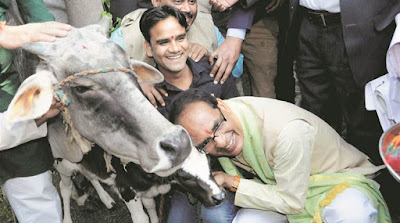Post-Covid world was touted to be a different world. But given the pace and speed of geo-political development, I would say, this change may come even before the Coronavirus crisis ends.
We may very soon see a tri-polar world, with India as the distinct third pole behind U.S and China – not necessarily in the same order. But all this will much depend on how U.S and China conduct themselves in the next few weeks and months. No doubt, for over a century now America has directly or indirectly ruled this planet of over a 7 billion people. From as far as inhabitable Diego Garcia in the Indian Ocean and Erbil governorate in violent Iraq to scenic Bahamas in Caribbean, American military footprint is inescapable. The U.S government is on record owning and controlling 716 permanent military bases scattered across the globe.
Every year Washington pumps billions of dollars to keep its empire’s interests intact. However, of late, there have been successive weak links in U.S’ plans to keep dominating the planet. Be it Obama or Trump or may be the next Presidential contender Biden, all these leaders lack the required courage and conviction to take on China.
Post-Soviet world gave America almost a free run in the global affairs. It camouflaged its ambitions in the grab of establishing democracy to dictate its wishes on the countries across the globe, more so in the restive Middle-East. Too engrossed with imposing its wishes on the Muslim countries, it lost its sight on the steady rise of China. By the time recognition came, it was too late in the day.
By 2010, China was already a power to reckon with. From a ramshackle, quasi-feudal empire it has transformed into one of the Great Powers of the 21st century. Soon its factories through cheap production became extension of its foreign policy of global domination and expansionism. The driving force behind this push was China’s historical experiences, most notably those of the 19th and early 20th centuries, known to the Chinese as the Century of Humiliation, where it lost both its territory and its prestige to the imperial powers of the day. These experiences have also been a tool in China’s relationships with the wider world as well as a unifying force within China.
The newly acquired power soon fuelled China’s ambition for global domination. Already captured the commerce and markets of both developing and developed countries, it begun trapping the poor countries with its debt diplomacy. Soon it went on to occupy critical positions at the global high tables including at the prominent committees and agencies of the U.N.. All this while America remained a silent spectator. Advent of Trump in early 2017 made America more inwards looking. It more or less relegated its leadership roles to its policy footnotes. Absence or reluctance of any second power to interfere gave China an open field to impose its expansionist plans on weaker nations.
As China's power grew, it became increasingly confident in challenging its neighbours and beyond. With more than 22,117 kilometres of borders with 14 different countries, China has numerous overlapping territorial claims with its neighbours. Power drunk Beijing mandarins soon started bullying neighbours including India, Japan, Indonesia, Vietnam and many others. Slowly and not so stealthily, it started laying claims into the South China Sea - home to many atolls, with multiple competing claims. Smaller countries in the Malay Peninsula were no match for the Chinese military might. Beijing ‘Salami Slicing’ and ‘Squeeze and Relax’ continued unabated in the region with little resistance from the victim countries.
Confident of its strength Beijing attempted the same with India recently when it occupied the gray zone on the LAC at the Galwan Valley and the Pangong Tso lake in Ladakh region. It expected that India will meekly surrender its territory without a contest. However, Chinese were caught in a different ball game altogether. India not only strongly contested Beijing’s claims, it also quickly decided to “dig in” and conduct “mirror deployment” to counter China’s large number Border Defence Regiment and regular PLA troops. Amidst eyeball to eyeball troops positioning, military and diplomatic parleys were held without any tangible outcome. India swiftly moved its radars, air defence missiles and fighter aircrafts to counter any possibility of Chinese misadventure. The situation remains the same today.
However, PM Modi by making an unscheduled, surprise visit to Ladakh has upped the ante now. Through his address to the troops PM Modi sent out a clear and unambiguous substantive message to China that India, and the rest of the world, will challenge its “expansionism”. India strong stand against Beijing expansionism has galvanised other nations who were at the receiving end of Dragon’s belligerence, but were fearful of reprisal. Be it Japan, Australia, Indonesia, Taiwan or even a small country like Myanmar, all have started speaking in unison against China’s predatory tactics.
To put it succinctly, India was left with just two choices either to retreat or react. PM Modi decided to opt for the later. Irrespective of potential costs India has decided to show China its place and ‘reframe the entire framework of the relationship to impose costs on China’. India’s action has left Beijing in a quandary of difficult choices to make – to restore the status quo ante by moving back and thereby suffer global humiliation or risk an escalatory spiral at the border and other areas of relationship including trade and commerce.
More importantly, in the whole episode till now Prime Minister Narendra Modi has emerged as the leader of the free world’s fight to contain Beijing, assuming a role now mostly vacated by President Donald Trump. Comparisons are being made in Western Capitals that if New Delhi, with a much weaker economy at home than West could take China by its horns, what is stopping them from doing the same.












